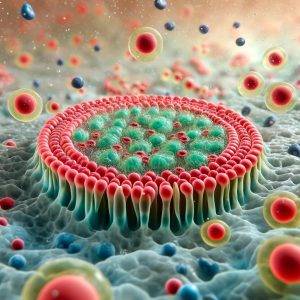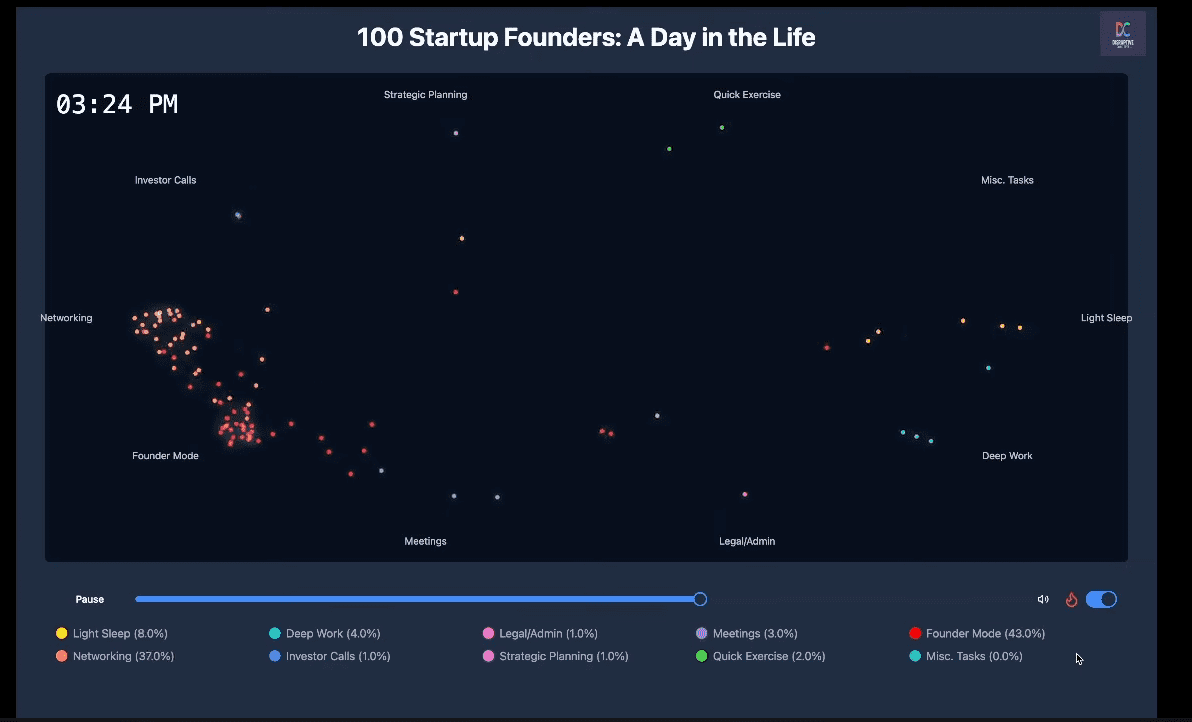Welcome
In an age where innovation moves at lightning speed, it’s easy to be left behind. But fear not, tech enthusiast! Dive deep with us into the next 5-10 years of technological evolution. From AI advancements, sustainable solutions, cutting-edge robotics, to the yet-to-be-imagined, our mission is to unravel, decode, and illuminate the disruptive innovations that will redefine our world.

The Ghosts of Galaxies Past: Unraveling the Secrets of M81’s Mysterious Trio
The M81 Group of galaxies, linked by tidal streams, engaged in a cosmic dance that reveals their turbulent past. There is something profoundly eerie about the way galaxies move — silent, slow, yet irresistibly drawn towards one another. The M81 Group is the stage for one of these cosmic dramas, where M81, M82, and NGC 3077 are caught in an ancient gravitational dance. This trio of galaxies, seemingly distant and serene, has a story marked by turmoil and transformation. It is here, in the quiet vastness of space, that a tale of violent interactions unfolds, leaving behind trails of stars and stellar debris that tell the story of their tumultuous past. Mergers of this scale are rare in the universe, and each leaves a distinct fingerprint on the structure of the galaxies involved. The M81 Group, with its tidal streams and distorted shapes, is a cosmic relic, a remnant of a
Membrane Mysteries: The Geometry That Changes Biochemical Reactions
What if classical enzyme theories are misleading for cell membrane receptors? In the microscopic world of cellular biology, the dance between molecules and membrane-bound receptors orchestrates life’s most intricate symphonies. From neurotransmitters sparking neural communication to bacterial receptors breaking down pollutants, these molecular interactions are pivotal. But what if our understanding of these reactions is fundamentally flawed? Classical theories like Michaelis-Menten kinetics assume a “well-mixed” environment, neglecting the spatial intricacies of membrane receptors. Recent research reveals that the geometry and spatial arrangement of receptors profoundly influence reaction rates, especially in crowded cellular landscapes. The implications are staggering: by revising classical models to include spatial dynamics, we might redefine our understanding of cellular processes and drug design. Revisiting Michaelis-Menten Kinetics Why the Classics Fall Short: Michaelis-Menten on Membranes Michaelis-Menten kinetics have long been a cornerstone of biochemistry. The model, first developed in 1913, describes how substrates bind to enzymes, forming complexes
Can Quantum Noise Be Tamed? The Bold Leap of SAGE Qubit
Noisy qubits, meet your match — discover the always-on, gapless revolution in quantum computing. Quantum computing has long promised to revolutionize technology, but its Achilles’ heel remains coherence loss due to environmental noise. Conventional exchange-only (EO) qubits struggle with magnetic field gradients and charge fluctuations, limiting their reliability. However, a groundbreaking innovation — the Singlet-only Always-on Gapless Exchange (SAGE) qubit — proposes a new paradigm. With an always-on exchange interaction and immunity to magnetic noise, the SAGE qubit could redefine quantum stability. What if the key to unlocking large-scale quantum computing isn’t more control but less disruption? The Challenge of Qubit Stability Quantum coherence is fleeting, constantly under siege by environmental noise. Traditional EO qubits, which rely on three electrons in quantum dots, are particularly vulnerable to local magnetic fluctuations. These unwanted disturbances introduce errors, reducing computational fidelity and limiting scalability. The SAGE qubit addresses this by encoding quantum information in four electrons arranged in a
A Leap into Crowdsourced Dermatology
Advancing Dermatology Research Through Technology. Imagine a world where medical researchers can tap into the collective power of everyday internet users to gather health data. This paper dives into how Google Search Ads were used to collect over 10,000 images of various skin conditions from people across the United States. It’s a groundbreaking approach to creating health datasets that are diverse and reflect real-world conditions. The Power of Ads in Medical Research The researchers used search ads to invite people to contribute images of their skin conditions. This method is ingenious because it reaches people at the exact moment they’re seeking information about their health concerns, leading to a rich and varied dataset. A Closer Look at the Data This dataset isn’t just a bunch of pictures. It includes detailed demographic and symptom information from over 5,000 individuals. This wealth of data offers a nuanced view of dermatological conditions across
The Puzzle of Names
Like a detective solving a mystery, this image represents the search for the true authors behind research papers with similar names. In the realm of scientific research, a unique challenge presents itself: distinguishing between authors who share the same name. This challenge is more than just a trivial matter; it is essential for properly attributing work and fostering connections within the scientific community. Pioneering Study A team of researchers at Stanford University took on this complex issue. They applied advanced methods like text-based analysis and graph neural networks to effectively differentiate authors with similar names. This innovative approach is vital in ensuring the integrity and accuracy of academic literature. The Intricacies of Author Identification The issue of common names in research databases often leads to confusion and misattribution. It’s akin to finding specific individuals in a large crowd where many share the same name. Accurate identification is key to recognizing
Magical Makeovers: How Your Phone Can Redesign Your Room!
Augmented Reality Transforming Interior Design In the world of home décor and interior design, an undeniable metamorphosis is underway, one that is as profound as it is subtle, and as revolutionary as it is inevitable. This change is being ushered in not by the traditional vanguards of taste and style, but rather by a technology that, until recently, was more at home in the realms of science fiction than in our living rooms: Augmented Reality (AR). Now, AR in interior design isn’t just a matter of convenience; it’s a paradigm shift in how we conceptualize the spaces we live in. It’s the kind of change that has the potential to alter our very relationship with the material world around us, much like how the internet changed our relationship with information. Consider, if you will, the traditional method of interior design. It’s a process fraught with uncertainty and imagination. You traipse
Categories
Recent Posts
- Cracking the Code of Motion: The AI That Constructs Skeletons from Chaos 02/23/2025
- AI’s New Gamble: Can Diffusion Models Overtake Autoregressive Giants? 02/23/2025
- When Mathematics Speaks in Code: The Search for an Explicit Formula 02/21/2025
- Beyond Reality: How AI Reconstructs Light, Shadow, and the Unseen 02/09/2025
- The Secret Language of Numbers: Counting Number Fields with Unseen Forces 02/08/2025
Sustainability Gadgets
Legal Disclaimer
Please note that some of the links provided on our website are affiliate links. This means that we may earn a commission if you click on the link and make a purchase using the link. This is at no extra cost to you, but it does help us continue to provide valuable content and recommendations. Your support in purchasing through these links enables us to maintain our site and continue to offer our audience valuable insights and information. Thank you for your support!
The Future of Everything
Archives
- February 2025 (9)
- January 2025 (19)
- December 2024 (18)
- November 2024 (17)
- October 2024 (18)
- September 2024 (17)
- August 2024 (18)
- July 2024 (17)
- June 2024 (29)
- May 2024 (66)
- April 2024 (56)
- March 2024 (5)
- January 2024 (1)
Technology Whitepapers
Share
Favorite Sites
- US investigators are using AI to detect child abuse images made by AI
Generative AI has enabled the production of child sexual abuse images to skyrocket. Now the leading investigator of child exploitation in the US is experimenting with using AI to distinguish AI-generated images from material depicting real victims, according to a new government filing. The Department of Homeland Security’s Cyber Crimes Center, which investigates child exploitation…
- The Download: shoplifter-chasing drones, and Trump’s TikTok deal
Shoplifters in the US could soon be chased down by drones The news: Flock Safety, whose drones were once reserved for police departments, is now offering them for private-sector security, the company has announced. Potential customers include businesses trying to curb shoplifting. How it works: If the security team at a store sees shoplifters leave,…
- Shoplifters could soon be chased down by drones
Flock Safety, whose drones were once reserved for police departments, is now offering them for private-sector security, the company announced today, with potential customers including businesses intent on curbing shoplifting. Companies in the US can now place Flock’s drone docking stations on their premises. If the company has a waiver from the Federal Aviation Administration…
- The Download: growing threats to vulnerable languages, and fact-checking Trump’s medical claims
This is today’s edition of The Download, our weekday newsletter that provides a daily dose of what’s going on in the world of technology. How AI and Wikipedia have sent vulnerable languages into a doom spiral Wikipedia is the most ambitious multilingual project after the Bible: There are editions in over 340 languages, and a further 400…
- Fusion power plants don’t exist yet, but they’re making money anyway
This week, Commonwealth Fusion Systems announced it has another customer for its first commercial fusion power plant, in Virginia. Eni, one of the world’s largest oil and gas companies, signed a billion-dollar deal to buy electricity from the facility. One small detail? That reactor doesn’t exist yet. Neither does the smaller reactor Commonwealth is building…



















